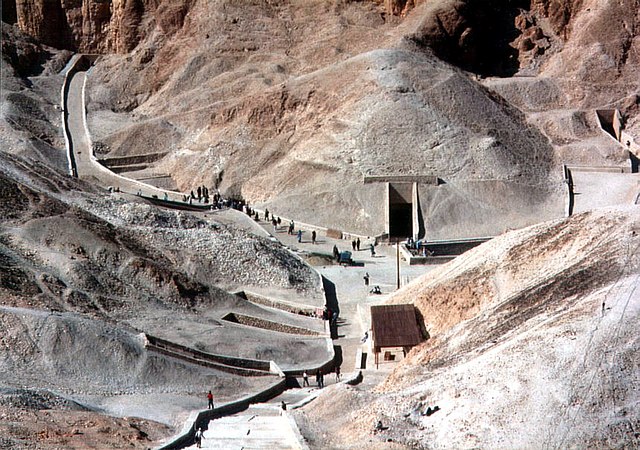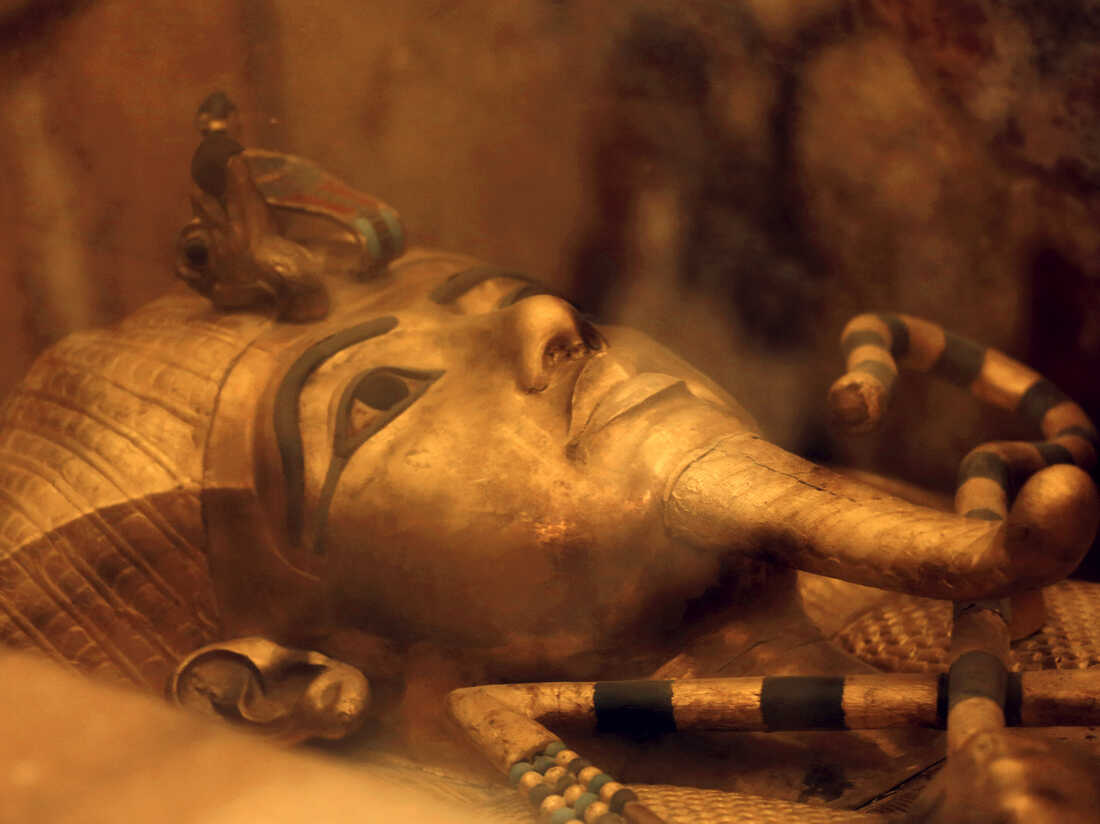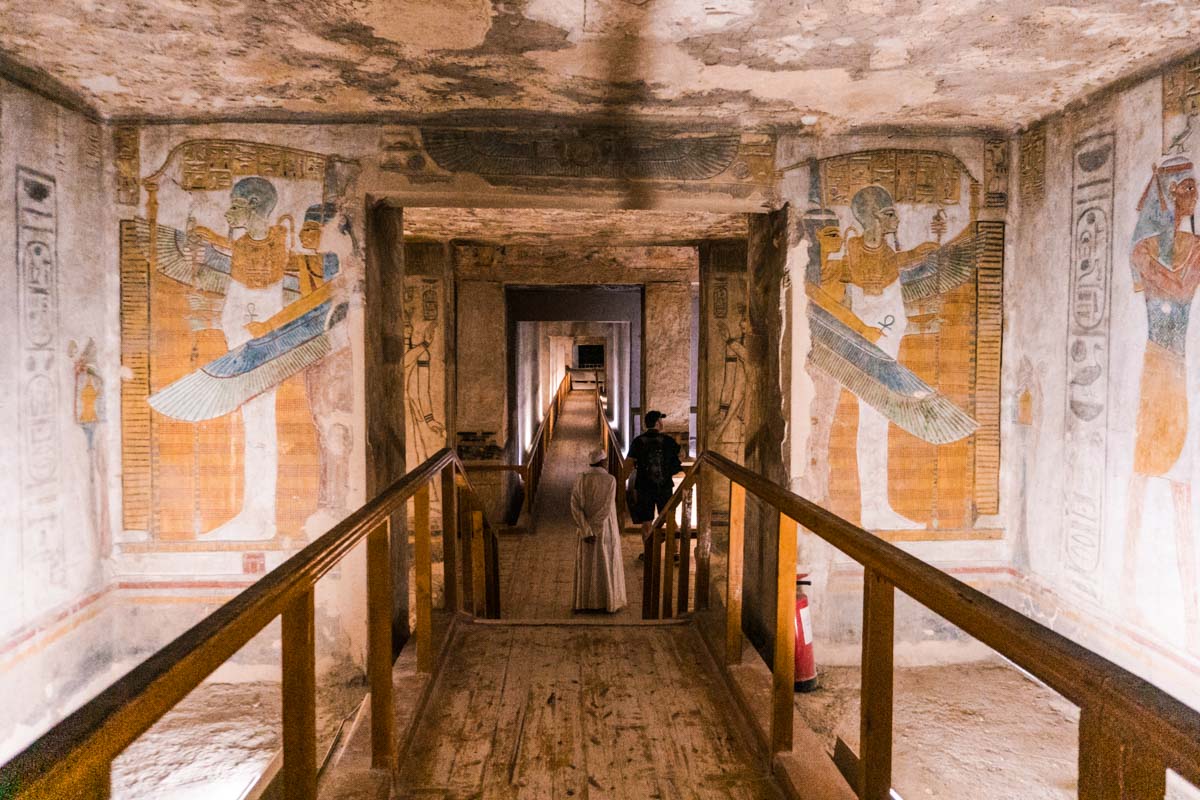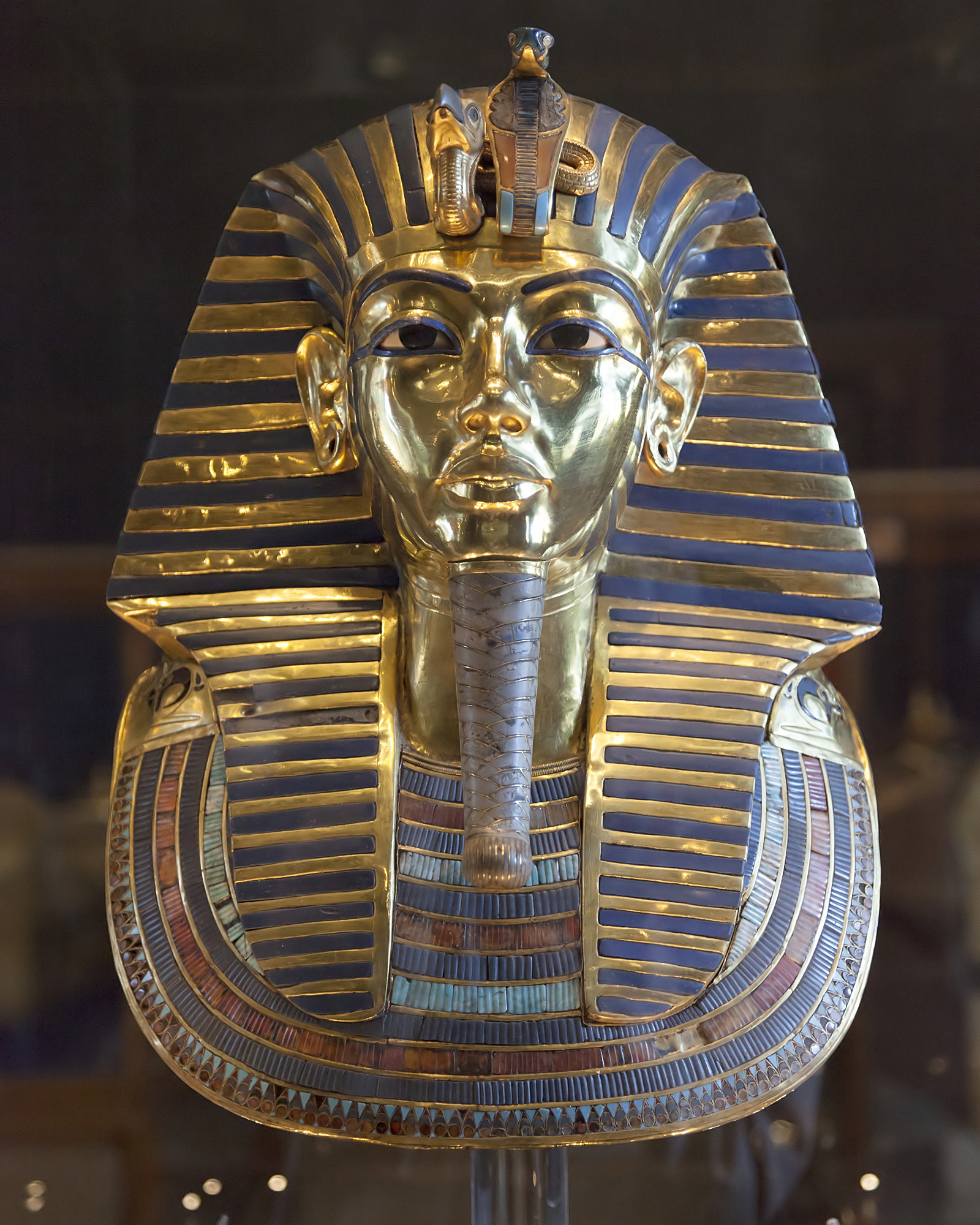Secrets of the Valley of the Kings: What You Need to Know
Exploring the secrets of the Valley of the Kings in Luxor, Egypt, is a journey through ancient history. This hidden gem, known for its unique tombs and breathtaking ruins, holds fascinating mysteries waiting to be discovered. From the clever burial strategies of the pharaohs to the intricate artwork adorning the chambers, this article uncovers the secrets that make the Valley of the Kings a must-see destination. So fasten your seatbelts and prepare to embark on an adventure into the heart of ancient Egypt.

The Valley of the Kings: A Historical Overview
Nestled on the west bank of the Nile River in Egypt, the Valley of the Kings is an archaeological gem that holds the remains of pharaohs and nobles from the New Kingdom period of ancient Egypt. This ancient burial ground was the final resting place for powerful rulers, including Tutankhamun and Ramesses II.
The Valley of the Kings gained prominence from the 16th to the 11th century BC, as pharaohs began to abandon traditional pyramid complexes in favour of hidden tombs carved into the rocky cliffs. These lavish tombs were filled with treasures and elaborate wall paintings that depicted scenes from the afterlife.
Over the years, more than 60 tombs have been discovered in the Valley. The discovery of Tutankhamun's tomb in 1922 by archaeologist Howard Carter brought the Valley of the Kings into the international spotlight. The tomb contained a wealth of treasure and artefacts, shedding light on the ancient Egyptian civilization.
Other notable tombs in the Valley include Ramesses III, Amenhotep II, and Seti I. Each tomb holds its mysteries and provides a fascinating glimpse into the lives and beliefs of the pharaohs.
The Valley of the Kings continues to be a source of fascination and intrigue for archaeologists, historians, and tourists alike. Its rich history and stunning architecture make it a must-visit destination for anyone interested in ancient Egypt.

Tomb Discovery
Discovery of Tutankhamun's Tomb
The discovery of Tutankhamun's tomb in the Valley of the Kings is one of history's most significant archaeological findings. In 1922, British archaeologist Howard Carter unearthed the nearly intact tomb of the young pharaoh, revealing a treasure trove of artefacts and insights into ancient Egyptian culture.
Tutankhamun's tomb, designated KV62, was hidden under debris and sand for over 3,000 years. Carter's meticulous excavation revealed a burial chamber filled with treasures, including golden funerary masks, elaborate jewellery, chariots, and other belongings accompanying the pharaoh into the afterlife.
The discovery shed light on the life and reign of Tutankhamun, who ascended to the throne at a young age and died unexpectedly. It also provided valuable information about ancient Egyptians' burial practices and religious beliefs.
The tomb of Tutankhamun is not the only notable tomb found in the Valley of the Kings. Other prominent tombs include those of Seti I, Thutmose III, and Ramses II, each offering valuable insights into the lives of these ancient rulers.
The discovery of Tutankhamun's tomb and other tombs in the Valley of the Kings continues to captivate scholars and enthusiasts alike, offering a glimpse into the richness and grandeur of ancient Egyptian civilization.

Other Notable Tombs in the Valley
The Valley of the Kings is home to the famous tomb of Tutankhamun and numerous other notable tombs. Although not as well-known, these tombs contain their unique treasures and stories.
One such tomb is the tomb of Ramses VI, known for its well-preserved and colourful wall paintings depicting scenes from the Book of the Dead. The tomb of Seti I, father of Ramses II, is another impressive site with intricate carvings and stunning artwork.
The tomb of Hatshepsut, one of the few female pharaohs of ancient Egypt, is also located in the Valley of the Kings. This tomb features a unique architectural design, with a long, inclined corridor that leads to multiple chambers.
Aside from these famous tombs, over 60 other tombs are scattered throughout the valley, each with its own story to tell. Exploring these lesser-known tombs allows visitors to gain a deeper understanding of the history and culture of ancient Egypt.
| Tomb | Description |
|---|---|
| Ramses VI | Well-preserved with colorful wall paintings |
| Seti I | Intricate carvings and stunning artwork |
| Hatshepsut | Unique architectural design with an inclined corridor |
| Plus 60 more | Each tomb has its own unique features and historical significance |

Archaeological Finds
Artwork and Relics in the Valley of the Kings
The Valley of the Kings is known for its magnificent tombs, exquisite artwork, and priceless relics. These treasures provide a fascinating glimpse into ancient Egypt's rich history and culture.
The walls of the tombs are adorned with beautiful paintings and intricate hieroglyphics, depicting scenes from the pharaoh's life, religious rituals, and the afterlife. These vividly coloured artworks showcase the skill and craftsmanship of the ancient Egyptian artisans.
In addition to the artwork, the Valley of the Kings has yielded numerous relics that offer valuable insights into ancient Egyptian civilization. Archaeologists have discovered many objects, including statues, jewellery, funerary equipment, and even the pharaoh's sarcophagus. Each artefact provides a unique piece of the puzzle, allowing historians to reconstruct the past and understand the rituals and beliefs of the ancient Egyptians.
Here are some notable examples of artwork and relics found in the Valley of the Kings:
- The magnificent golden mask of Tutankhamun is considered one of the most iconic artefacts of ancient Egypt.
- Elaborate funerary furniture, such as ornate thrones and beds, demonstrate the opulence and status of the pharaohs.
- Intricately carved canopic jars were used to store the pharaoh's internal organs during the mummification process.
- Amulets and jewellery adorned with precious gemstones symbolise protection and prosperity in the afterlife.
These artworks and relics provide a fascinating window into the lives of the ancient Egyptians and continue to captivate visitors and researchers alike. They serve as a testament to the enduring legacy of the Valley of the Kings and the remarkable achievements of this ancient civilization.

Understanding Ancient Egyptian Burial Practices
Understanding ancient Egyptian burial practices is essential for grasping the significance of the tombs in the Valley of the Kings. Ancient Egyptians strongly believed in the afterlife and constructed elaborate tombs to ensure that the deceased could enjoy a prosperous and eternal existence. Here are some key aspects of ancient Egyptian burial practices:
-
Mummification: The process of mummification involves preserving the body to prevent decay. This was achieved by removing internal organs, drying the body with natron, and wrapping it in linen bandages.
-
Funerary masks and amulets: Funerary masks, such as the famous gold mask of Tutankhamun, were placed over the mummy's face to provide protection and guidance in the afterlife. Amulets, small ornamental charms, were also buried with the deceased to provide further protection.
-
Offering chambers: Burial chambers often offered tables and storage for food, drink, and other items believed to be necessary for the sustenance of the deceased in the afterlife.
-
Rituals and prayers: Ancient Egyptians performed rituals and prayers to ensure a successful transition to the afterlife. These rituals often included the opening of the mouth ceremony, where the deceased's mouth was ritually opened to allow them to breathe and speak in the afterlife.
By understanding these burial practices, we can appreciate the immense cultural and religious significance of the Valley of the Kings and its tombs.

Curse of the Pharaohs
The Legend and Myth of the Curse
The Curse of the Pharaohs is a legendary superstition associated with the Valley of the Kings. According to the myth, anyone who disturbs the resting place of the pharaohs will be cursed and suffer misfortune or even death. The curse gained popularity after the discovery of Tutankhamun's tomb in 1922 when several excavation team members died unexpectedly.
Despite the allure of the curse, many archaeologists and experts refute its existence, attributing the deaths of those involved in the excavation to natural causes. They argue that the curse is merely a product of superstition and sensationalism.
However, it is undeniable that the mysterious deaths and accidents surrounding the opening of Tutankhamun's tomb added to the allure and fascination surrounding the Valley of the Kings. The curse became a popular subject in books, movies, and other forms of media, further perpetuating its notoriety.
Today, tourists visiting the Valley of the Kings can marvel at the rich history and archaeological wonders without fearing the legendary curse. The real treasure lies in the intricate tomb architecture, stunning artwork and relics, and valuable insights into ancient Egyptian burial practices provided by the valley.

Examining the Curse's Origins and Consequences
The Curse of the Pharaohs is a fascinating legend surrounding the Valley of the Kings and its tombs. Examining the curse's origins and consequences sheds light on the beliefs and superstitions of ancient Egypt.
The Curse of the Pharaohs is believed to have originated during the late 19th and early 20th centuries when a series of deaths occurred shortly after the discovery of Tutankhamun's tomb. The media sensationalized these deaths, attributing them to the curse placed on anyone who disturbed the resting place of a pharaoh.
However, it's important to note that many of those involved in excavating and studying the tombs lived long and fulfilling lives. The belief in the curse was fueled by a combination of coincidence, the mysterious nature of ancient Egyptian culture, and the public's fascination with the supernatural.
The consequences of the so-called curse led to increased interest in Egyptology and fueled the popularity of the Valley of the Kings as a tourist destination. Today, the Valley of the Kings attracts visitors from around the world who are captivated by the history, art, and mystery surrounding this ancient burial site.
While the Curse of the Pharaohs may be more myth than reality, it continues to capture our imagination and serves as a reminder of the enduring allure of ancient Egypt.

Tomb Architecture and Design
Unveiling the Secrets of Tomb Construction
Unveiling the Secrets of Tomb Construction, the Valley of the Kings holds fascinating insights into ancient Egyptian burial practices and tomb design. The tombs in this archaeological site were meticulously constructed to protect the pharaohs and their treasures in the afterlife.
Tomb architecture played a significant role in ensuring the eternal preservation of the deceased. The designs incorporated intricate passageways, chambers, and hidden traps to deter robbers and safeguard the pharaoh's belongings.
Hieroglyphs and symbols adorned the tomb walls, providing vital information about the pharaoh's life, achievements, and offerings to the gods. These inscriptions also served as guides and magical spells to assist the pharaohs on their journey to the afterlife.
Excavation techniques used to unearth the tombs involved meticulous planning and skilled labour. Archaeologists employed tools such as chisels, brushes, and picks, delicately removing layers of debris to reveal the hidden wonders within.
Despite the challenges faced during excavation, the discoveries made in the Valley of the Kings continue to captivate the world. Each tomb has its unique architecture and artwork, showcasing the grandeur and beliefs of ancient Egyptian civilization.
Here's an overview of the topics covered in this section:
- Tomb architecture: Design elements and features
- Hieroglyphs and Symbols: Meaning and Significance
- Excavation techniques: Tools and methods used in uncovering the tombs.
The Significance of Hieroglyphs and Symbols
The hieroglyphs and symbols found in the tombs of the Valley of the Kings hold great significance in understanding ancient Egyptian culture and religion. These intricate carvings and paintings provide insights into the beliefs, rituals, and daily life of the pharaohs and their subjects.
Hieroglyphs, the ancient Egyptian writing system, were often used to convey religious and mythological texts. They represented both sounds and ideas, combining phonetic and ideographic elements. By deciphering these hieroglyphs, archaeologists and historians have gained valuable knowledge about the religious and funerary practices of the ancient Egyptians.
Symbols were also commonly used in the tombs of the Valley of the Kings. These symbols had various meanings and were often associated with specific gods, goddesses, or concepts. For example, the ankh symbol, which resembles a cross with a loop at the top, represented life and was a symbol of eternal existence. The scarab beetle, another common symbol, was associated with rebirth and protection.
The study of hieroglyphs and symbols has allowed researchers to reconstruct the stories and beliefs of the ancient Egyptians, shedding light on their cosmology, worldview, and religious practices. These ancient texts and symbols continue to captivate us with their beauty and mystery, offering a glimpse into the rich tapestry of the Valley of the Kings.

Excavation Techniques
Tools and Methods Used in Excavating the Tombs
Excavating the tombs in the Valley of the Kings required various tools and methods to uncover ancient treasures and preserve the delicate artefacts. Here are some key tools and techniques used in the excavation process:
-
Brushes: Soft brushes are used to carefully remove loose dirt and debris from the surfaces of the artefacts without causing any damage.
-
Trowels: Trowels with thin, flat blades gently scrape away layers of dirt and sediment, revealing the underlying structures and objects.
-
Chisels: Chisels carefully chip away at the surrounding rock or plaster, allowing access to hidden chambers and passages within the tombs.
-
Ground-penetrating radar: This non-invasive technique uses radar signals to create images of subsurface structures, helping archaeologists locate hidden chambers and determine the layout of the tombs.
-
Laser scanning: Laser scanners create detailed 3D models of the tombs, helping researchers analyze the architecture and identify structural vulnerabilities.
-
Photography: High-resolution photography documents the tombs' condition and contents, allowing for detailed analysis and preservation efforts.
-
Conservation: Once artefacts are unearthed, conservationists use specialized techniques and materials to stabilize and protect them from further deterioration.
By employing these tools and methods, archaeologists can uncover the secrets of the Valley of the Kings while ensuring the preservation of these ancient treasures for future generations to appreciate.
